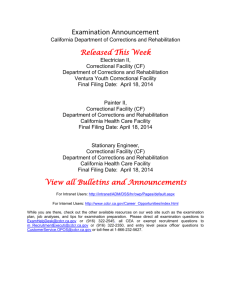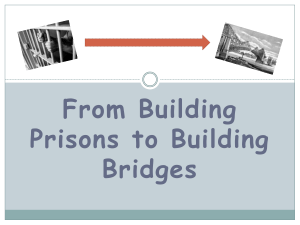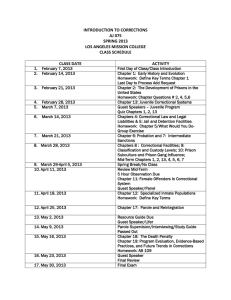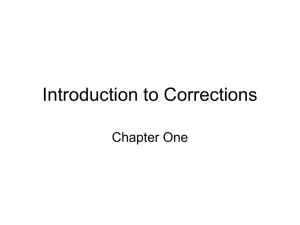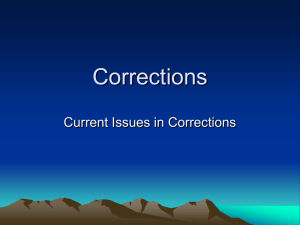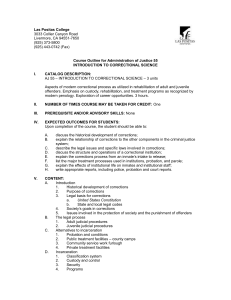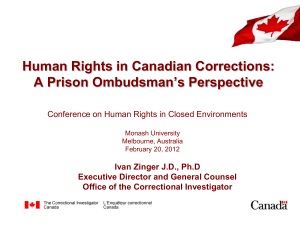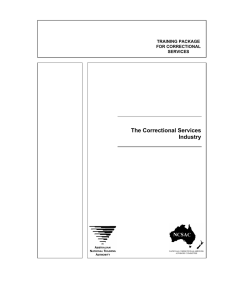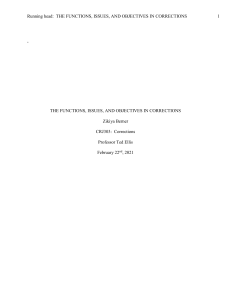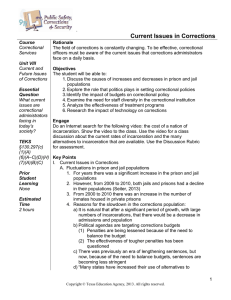Chabot College Fall 2010 Course Outline for Administration of Justice 55
advertisement
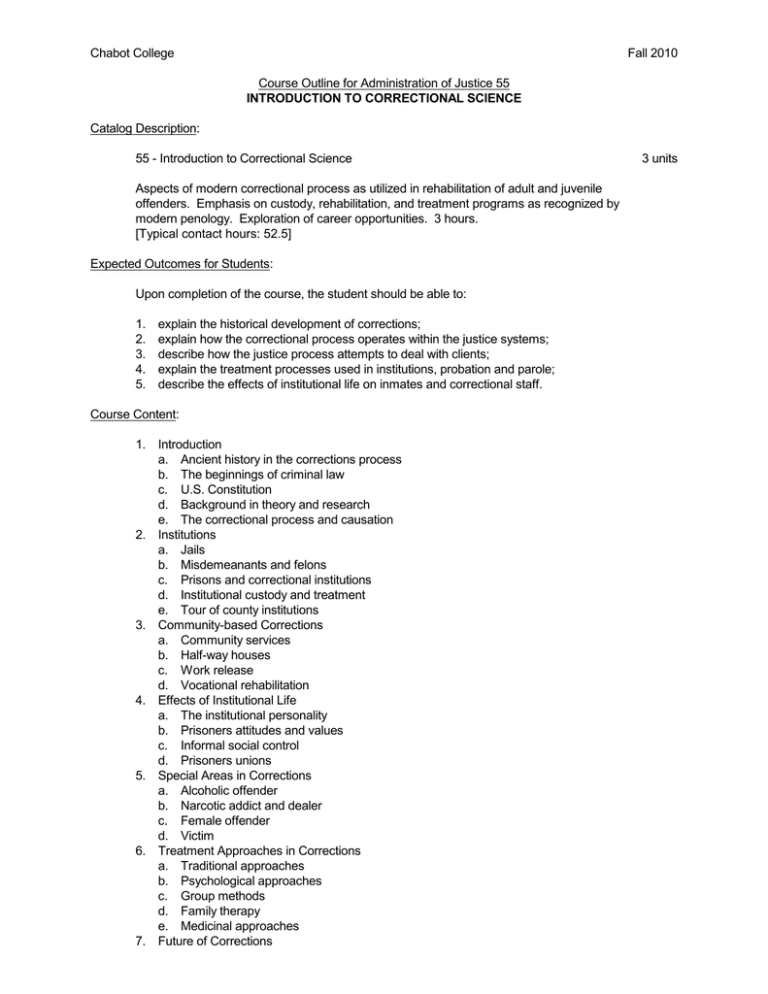
Chabot College Fall 2010 Course Outline for Administration of Justice 55 INTRODUCTION TO CORRECTIONAL SCIENCE Catalog Description: 55 - Introduction to Correctional Science Aspects of modern correctional process as utilized in rehabilitation of adult and juvenile offenders. Emphasis on custody, rehabilitation, and treatment programs as recognized by modern penology. Exploration of career opportunities. 3 hours. [Typical contact hours: 52.5] Expected Outcomes for Students: Upon completion of the course, the student should be able to: 1. 2. 3. 4. 5. explain the historical development of corrections; explain how the correctional process operates within the justice systems; describe how the justice process attempts to deal with clients; explain the treatment processes used in institutions, probation and parole; describe the effects of institutional life on inmates and correctional staff. Course Content: 1. Introduction a. Ancient history in the corrections process b. The beginnings of criminal law c. U.S. Constitution d. Background in theory and research e. The correctional process and causation 2. Institutions a. Jails b. Misdemeanants and felons c. Prisons and correctional institutions d. Institutional custody and treatment e. Tour of county institutions 3. Community-based Corrections a. Community services b. Half-way houses c. Work release d. Vocational rehabilitation 4. Effects of Institutional Life a. The institutional personality b. Prisoners attitudes and values c. Informal social control d. Prisoners unions 5. Special Areas in Corrections a. Alcoholic offender b. Narcotic addict and dealer c. Female offender d. Victim 6. Treatment Approaches in Corrections a. Traditional approaches b. Psychological approaches c. Group methods d. Family therapy e. Medicinal approaches 7. Future of Corrections 3 units Chabot College Course Outline for Administration of Justice 55, Page 2 Fall 2010 a. b. c. d. Institutions Probation Parole Education and personnel Methods of Presentation: 1. 2. 3. 4. Lecture and discussion Guest speakers Handouts Tour of institutions Assignments and Methods of Evaluating Student Progress: 1. Typical Assignments a. Do a group project on police stress as it applies to corrections b. Research issues related to rehabilitation of offenders 2. Methods of Evaluating Student Progress a. Attendance and participation b. Quizzes and midterm examination c. Oral and written presentations d. Group project e. Final examination Textbook(s) (Typical): Corrections Fundamentals, First edition, 2006, by Garland, MCG Publisher Special Student Materials: None. ADMJ 55, revised 9/09: cs

